You don’t need me to explain why Delia is so important. Nor do you need me to explain anything about her books. Both you and I know that they are great, and that they contain recipes that simply work. At her insistence, they’ve been tested into near oblivion well before they make it into print and for anyone taking their first, tentative steps into the kitchen, there is no better guide than her. There must have been millions of students and first-homers who were thrust into the world clutching at least one Delia tome, be it her Complete Cookery Course, her (unfairly) derided How to Cheat at Cooking, or, indeed, the perfectly-titled How to Cook.
Within the pages of How to Cook are not only recipes, but methods and techniques that have multiple applications. There are plentiful explanations of why things happen, how they happen and when they happen, and often heading back to such basics provides valuable lessons and insight, especially for an experienced cook.
Last week was re-opening week at the restaurant: by the time the last diners left on Friday evening, I’d done 12 days back-to-back. A restaurant, even a small one, takes some time to get up to speed once it has slowed to a standstill: emerging from winter hibernation required nearly two weeks of cleaning, scrubbing, washing, organising, re-organising, interviewing, planning, prepping, cooking and serving.
Seeing the dining room full once again and having the new dishes so well-received is a joy that never gets old, but it left me with little time to cook anything at home before the weekend. A hastily-assembled Irish tea loaf seemed like a suitable (and suitably easy) bake to settle on.
Dried fruit soaked in sweetened tea, held together with a single egg, a splash of milk and some flour, then baked into a dense cake. In the method Delia lists teas and suggests the baker choose their favourite. I adore Lapsang Souchong tea and use it often in cooking at the restaurant, particularly when I want to impart a savoury, almost meaty, bacon-y flavour into a dish. It fulfilled a similar role in this cake, creating a loaf that is equally at home with butter and a spoonful of jam and a cup of tea, as it is with a slice of salty cheese and a glass of something fortified and sturdy. The solitary egg makes me think this cake would be extremely easy to make vegan, replaced with silken tofu or soaked chia seeds. Gluten-free flour would just as easily bind the dried fruits soaked in sweet tea. I’ll wager now that the cake will see us through the week: a slice taken here and there, early in the morning eaten in the car on my way to work, or spread with Nutella last thing at night on my return from the restaurant.
And on Sunday, there was Delia’s souffle. Cheese souffle. Twice-baked, reanimated through the heat of the oven and covered in cream, then served warm with a cool salad, leaves spiked and glossy with a sharp vinaigrette.
For me, this was a piece of pure, unleavened nostalgia: the first meal I ever, ever cooked in a professional kitchen was this exact dish, at a restaurant called Axis under the stern guidance of executive chef Tony Fleming, whilst filming my first episode of Masterchef. I had never set foot inside a professional kitchen before, not cooked on a stove that burst into flames when oil was spilt on it, not prepared the same dish multiple times, to order, alongside other cooks who were also hustling their own ingredients into complete dishes all at the same time. The noise. The heat. The pressure. The concentration. You learn - very rapidly - that home cooking, however excellent it may be, is a different beast entirely from what takes place in a commercial kitchen. And I loved it.
I was tasked with making soufflés: Flour and eggs and dairy and air, bound and billowing and notoriously oh so fickle.
‘On order: two souffle and then another three then another two: six minutes to pass for the first then eight minutes then nine - that’s seven all day, yes?’
‘Yes. Chef. Yes - chef!’ Hesitancy fading over time.
There was, of course, a camera crew on hand, ready to capture the successes and the failures. There was considerably more interest in the latter though, thankfully, there weren’t that many. By the end of service I wanted to do it all over again: ‘I could do this day in, day out’ I said during the post-service interview. I’d caught the bug. Instead of getting prepped and ready for dinner, I went back to the Masterchef studio and cooked my way into the quarter final. That was in 2009. July 29th. The day after my mum’s birthday, and since then I’ve not really stopped cooking, or loving it.
But nor have I ever made another twice-baked cheese soufflé. So that’s what I picked out and cooked for lunch. A scattering of cheeses languishing from Christmas: predominantly something blue and distinctly goaty. Mixed leaves and a punchy vinaigrette. Lunch with a side of happy memories, and not a madeleine in sight.




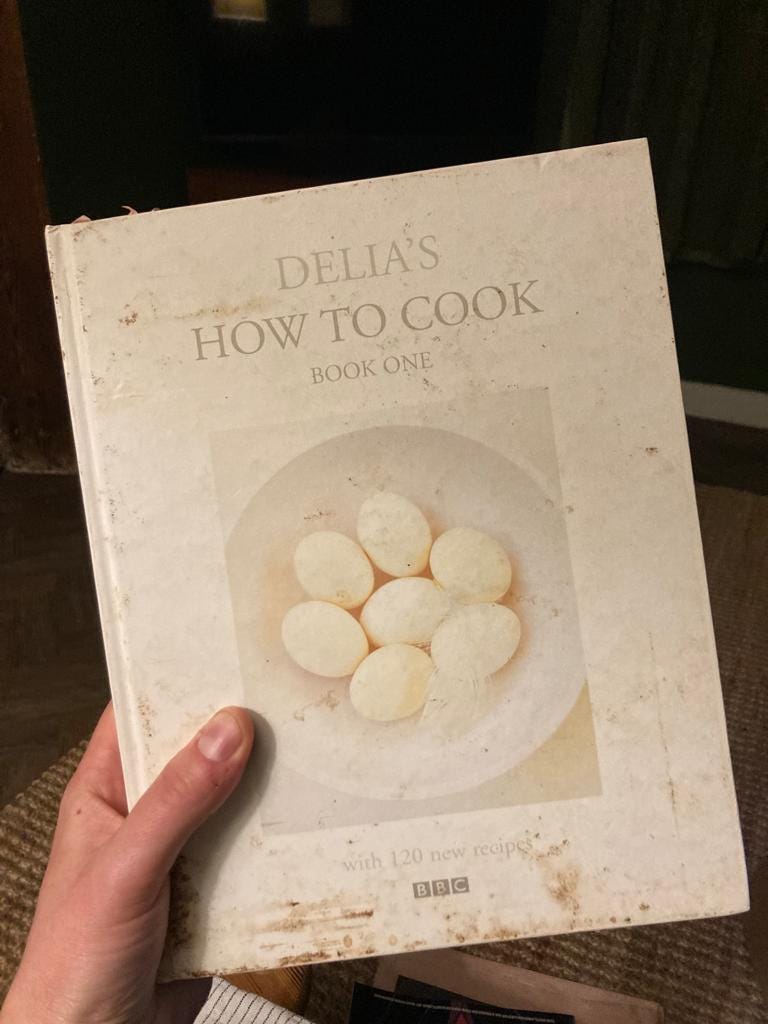
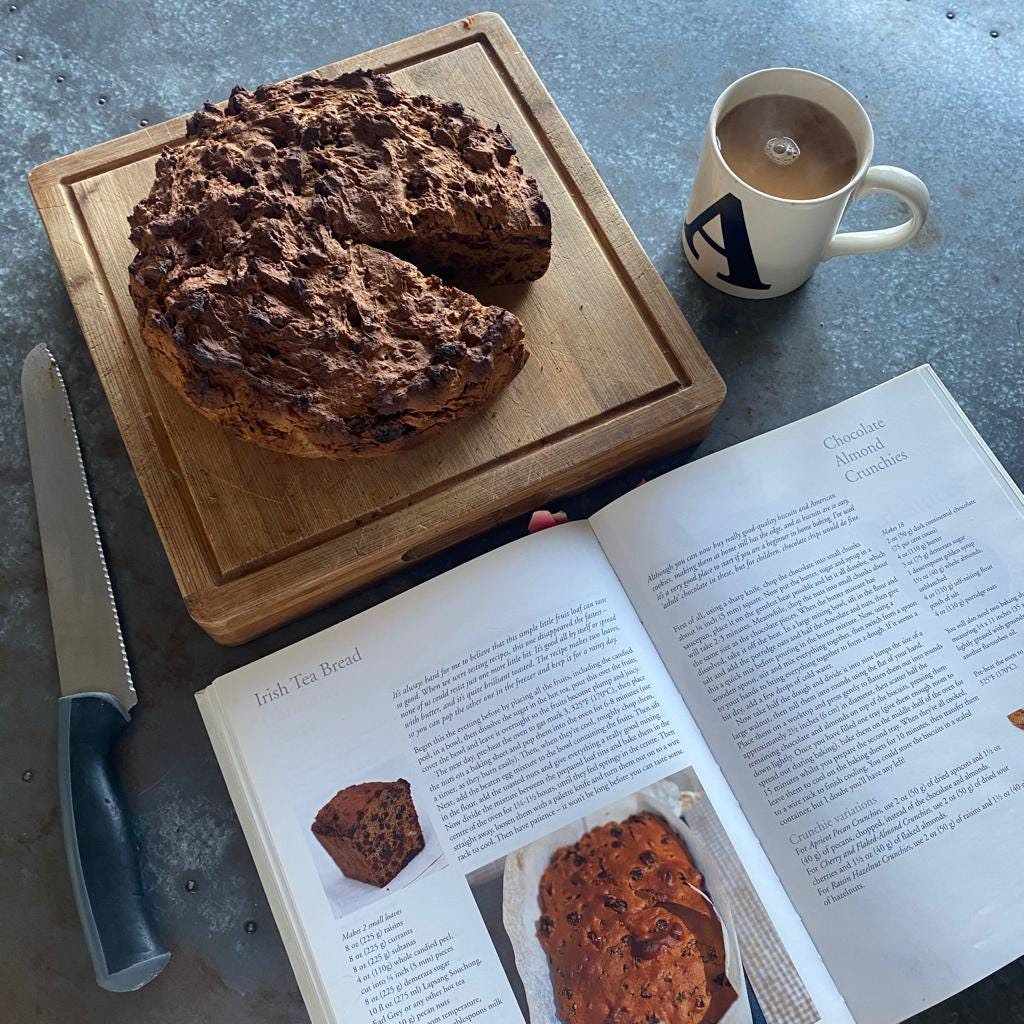
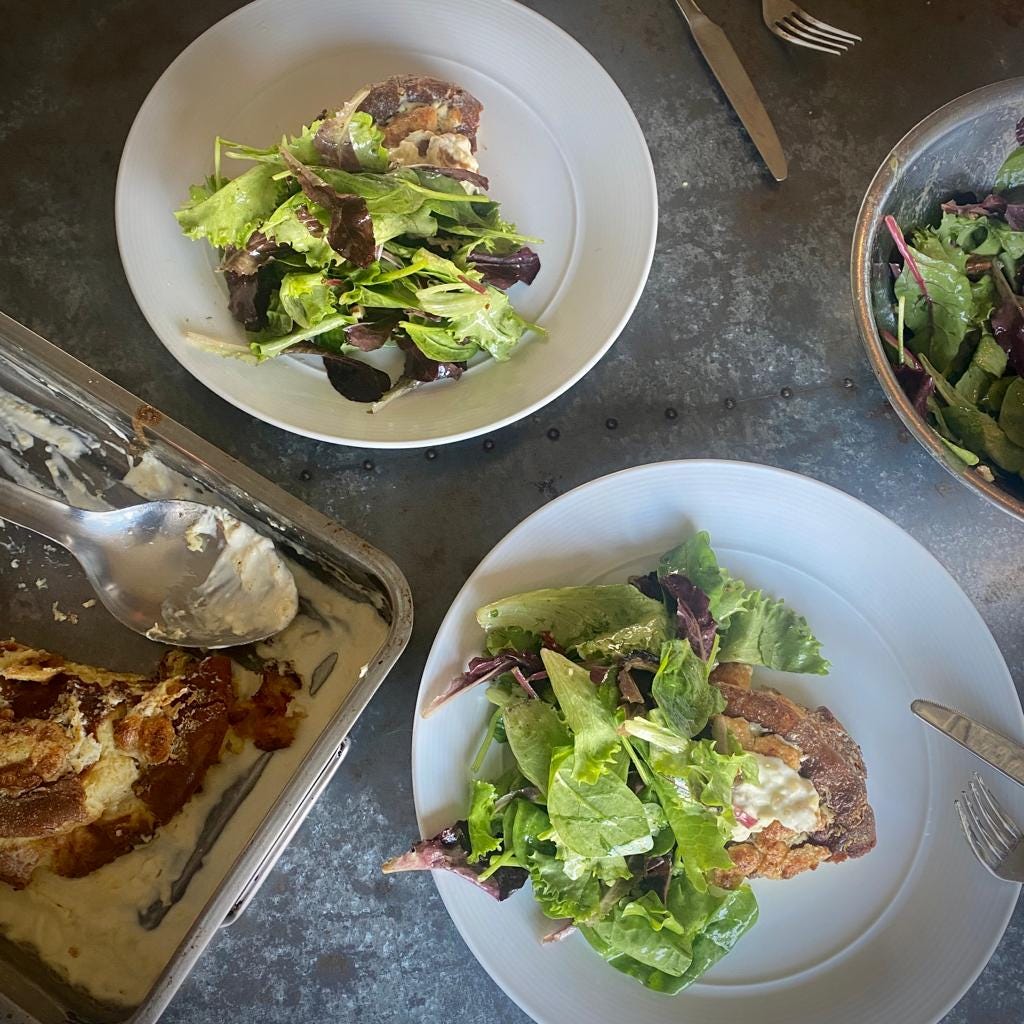
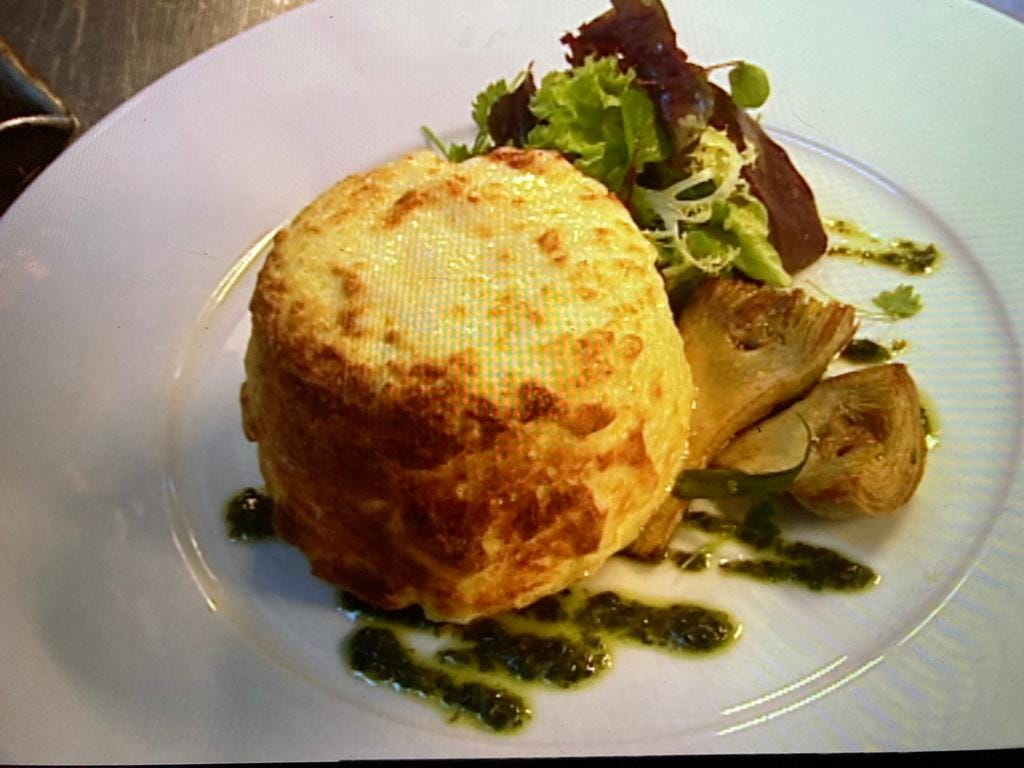
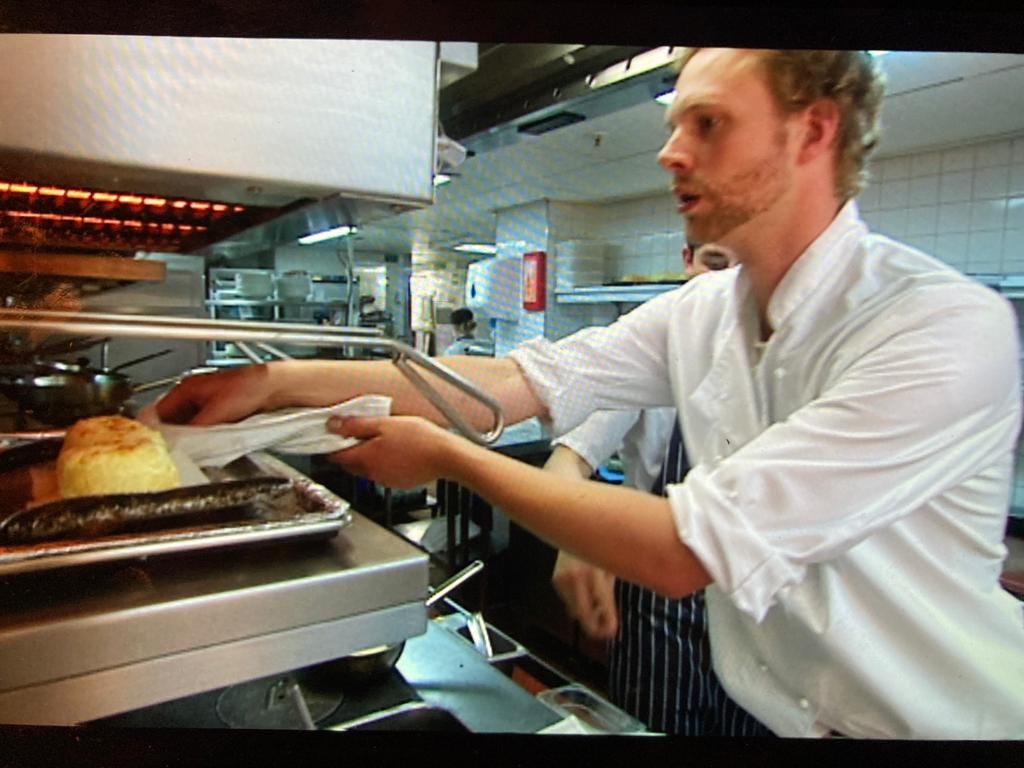
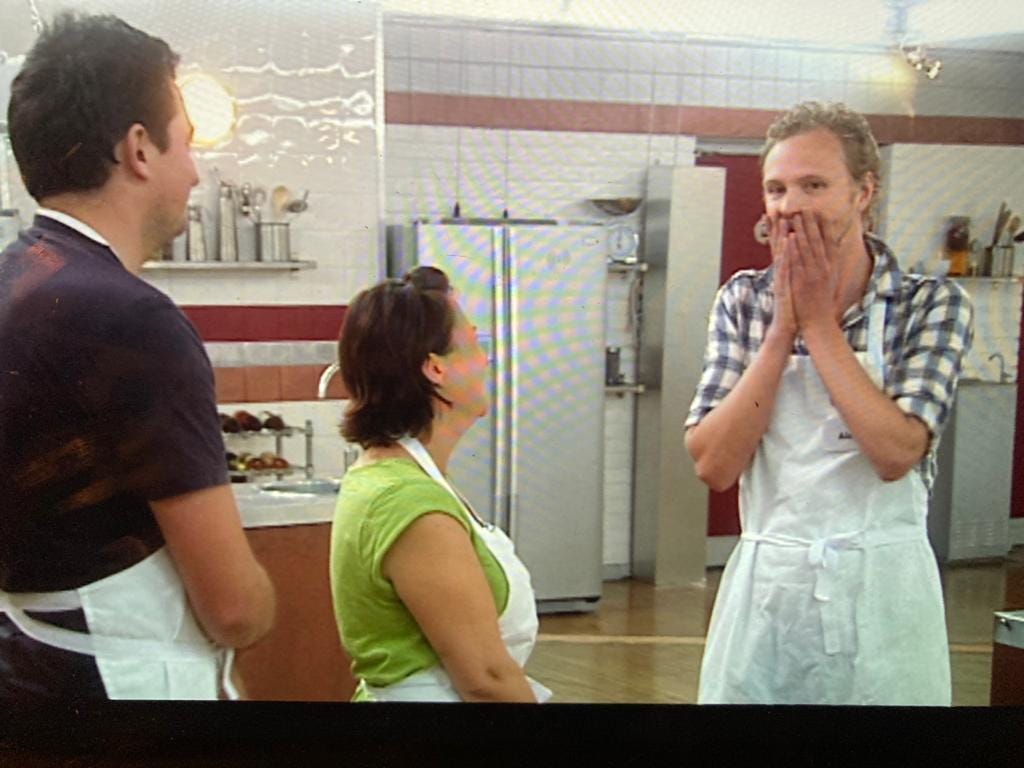
Delicious, nostalgic and love how grubby the cover is. Really, really want soufflé and tea cake for tea. Sounds ruddy perfect for Sunday night.